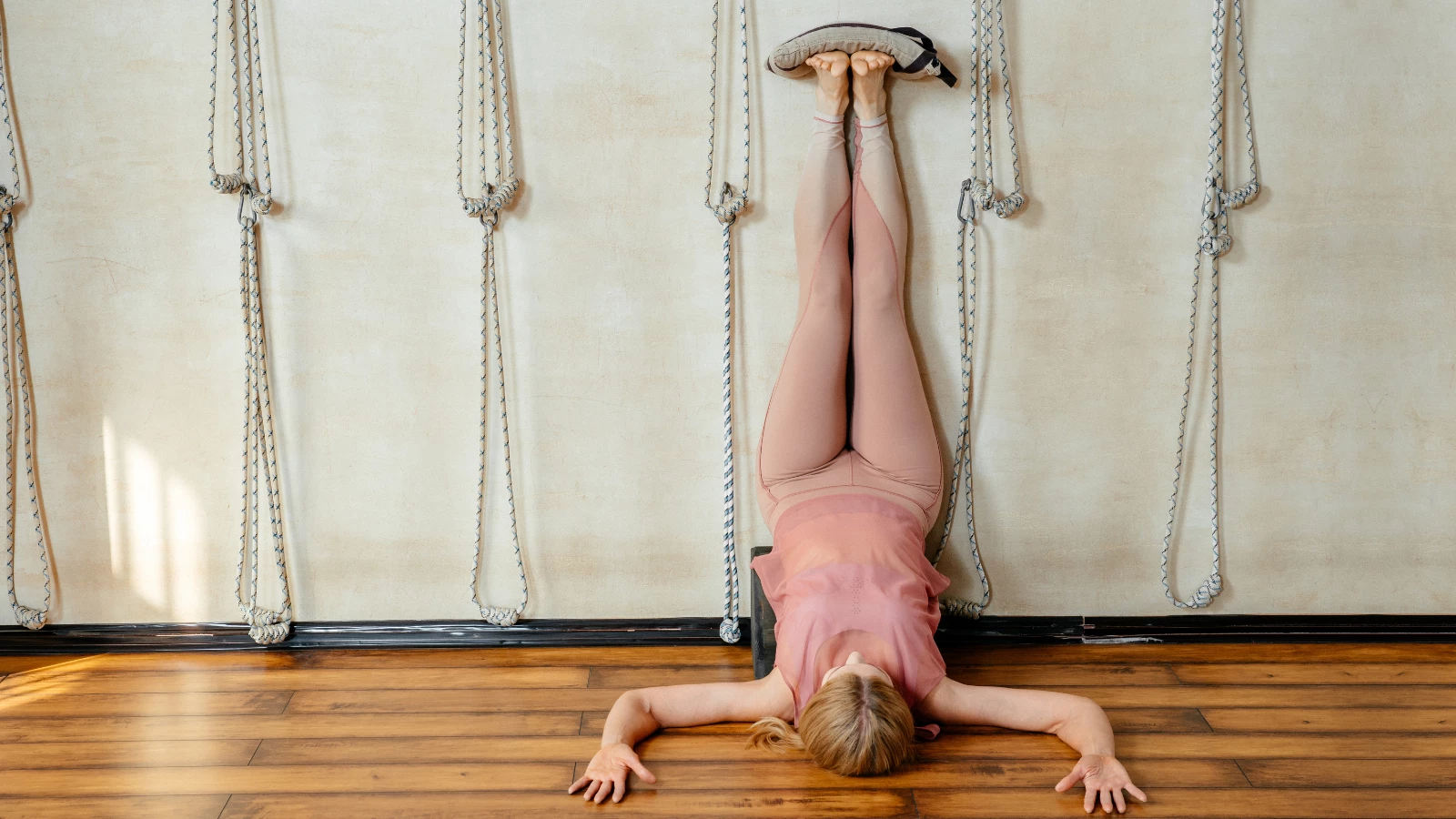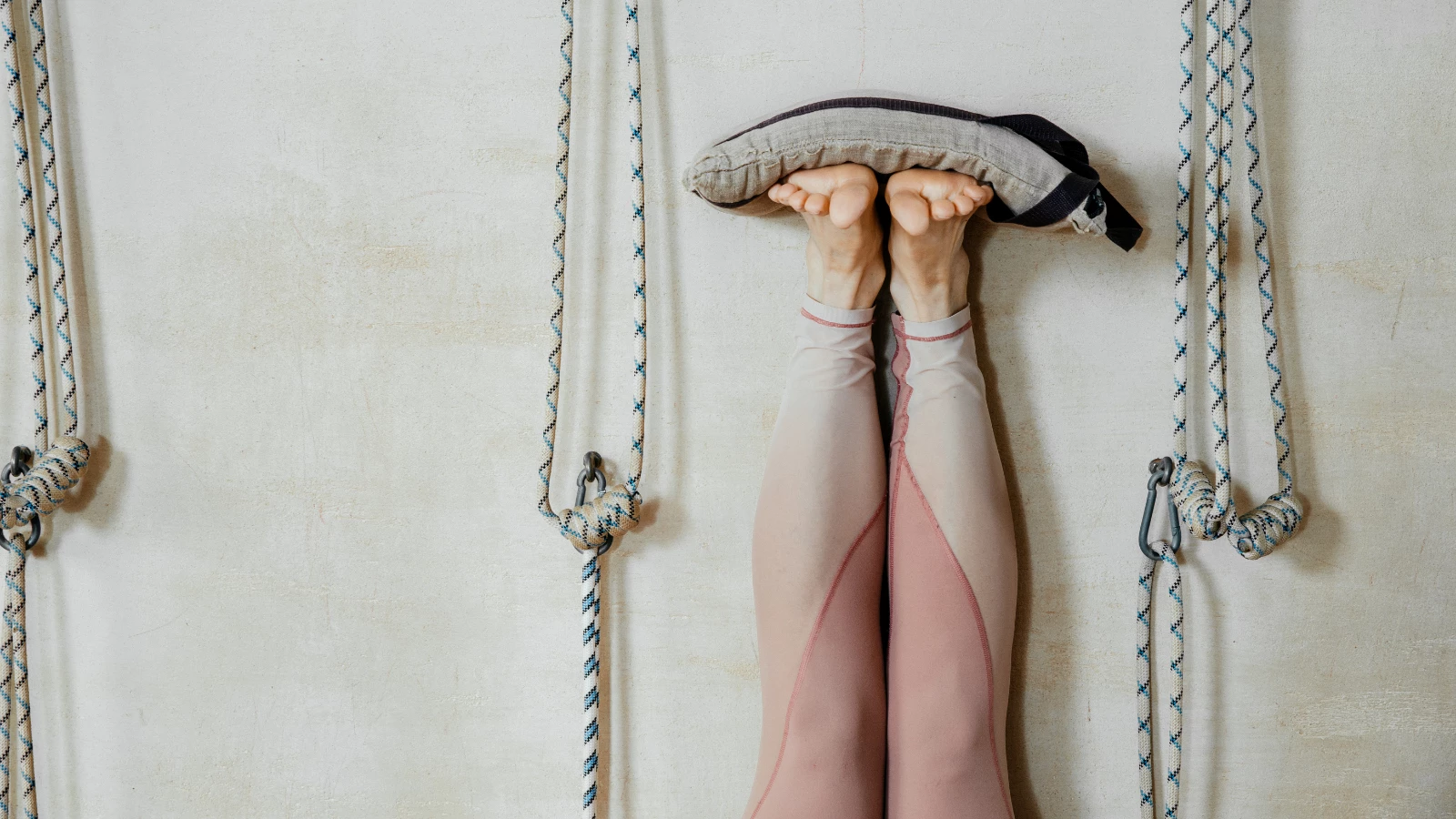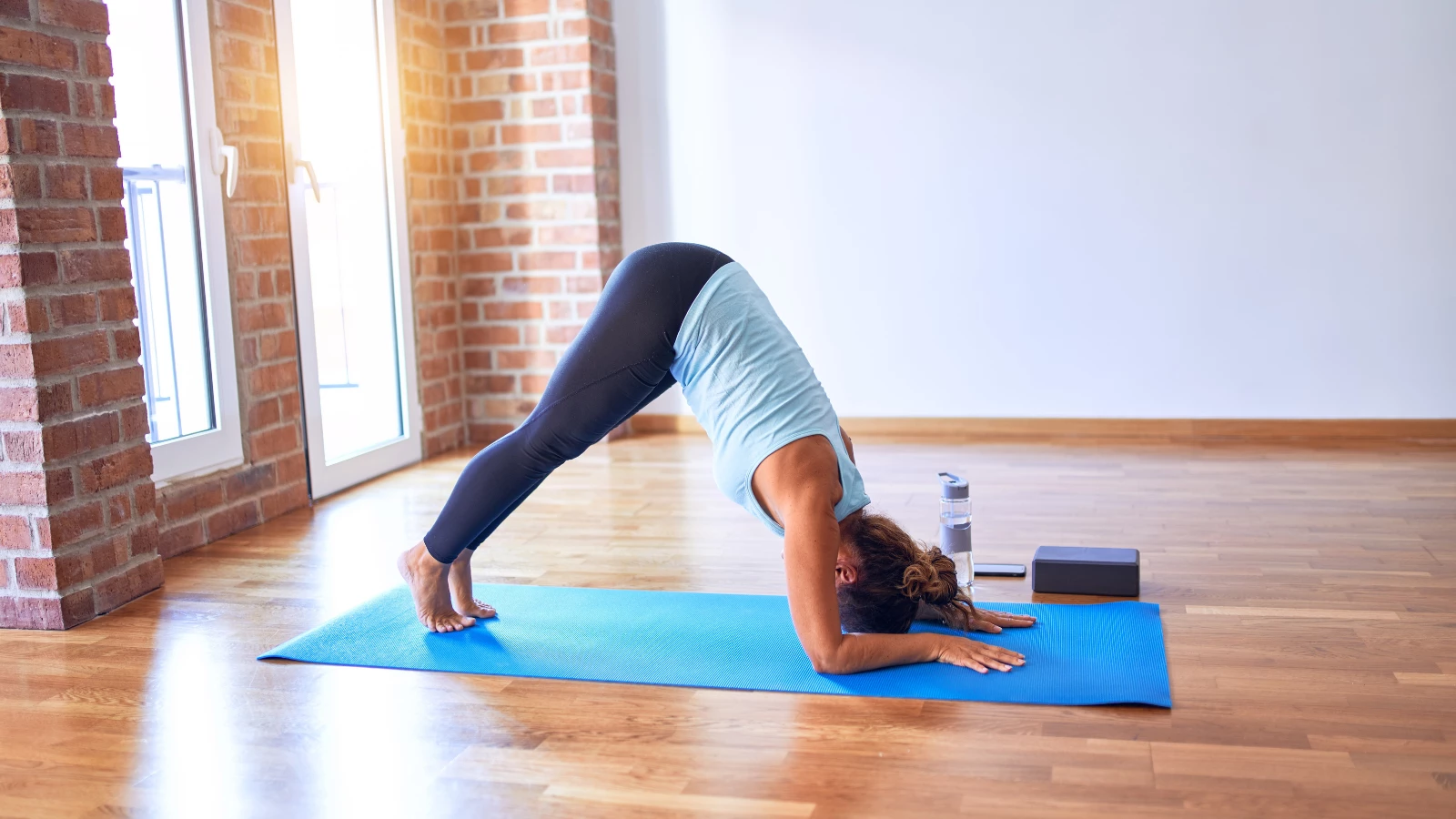Invert Safely: Healthy Alternatives to Traditional Yoga Inversions

Inversions are powerful poses that bring the head below the heart and often require bearing weight through the hands and shoulders. Active inversions include poses like Handstand Pose (Adho Mukha Vrksasana), Forearm Stand Pose (Pincha Mayurasana), Shoulderstand Pose (Salamba Sarvangasana), and Headstand Pose (Salamba Sirsasana). However, even milder poses such as Standing Forward Bend Pose (Uttanasana) and Downward Facing Dog Pose (Adho Mukha Svanasana) place the head below the heart and offer a mild inversion effect.
Benefits of Yoga Inversions

There are many benefits to placing ourselves upside down. Because we are reversing our typical relationship to gravity, inversions encourage venous return, which is the return of blood to the heart. Typically, the blood in the feet and legs moves against gravity to return to the heart. This movement Is assisted by the presence of one-way valves in our veins, muscular contraction, pressure differentials in the body, and the contraction of the heart. When we invert, our blood can easily drop back to the heart without effort, giving the one-way valves in our veins a respite.
Inversions facilitate lymphatic drainage, which can support our immune system. The body’s cells are surrounded by extracellular fluid, which enters the lymphatic system to be filtered. Unlike our vascular system, in which the movement of blood is supported by the beating of our hearts, lymph moves through the body passively. By turning upside down, gravity helps the fluid to move through the system. This movement supports immune function and can also assist in conditions such as edema (swelling of the extremities).
Practicing inversions can also help us to develop our proprioception (self-perception in space) as well as help us cultivate upper body strength. Psychologically, the practice of inversions can help students explore a sense of play, resilience, and adventure.
Contraindications for Yoga Inversions
Although inversions have many benefits, putting ourselves upside down requires some caution. Active inversions such as Handstand, Forearm Stand, and Headstand require upper body strength and mobility, as well as healthy shoulder, elbow, and wrist joints. Injuries to these joints could be exacerbated by the stress of inversions.
Students with balance or inner ear issues may find turning upside down disorienting or even nauseating. As inversions will tend to increase the fluid pressure in the upper body, they are contraindicated for students with eye pressure issues such as glaucoma or recent surgery. Headstand and Shoulderstand may put stress on the delicate vertebrae of the cervical spine and may not be appropriate for students with neck issues. Students with unmanaged blood pressure issues should be cautious when taxing the cardiovascular system through inverting. And of course, there is always the risk of falling.
How to Practice Healthy Alternatives to Yoga Inversions
Fortunately, several inversion alternatives offer the benefits of inversions while mitigating the risks. The following inversion alternatives are listed from most restorative to most activating.
Legs Up the Wall (Viparita Karani)

This pose is perfect for students who may have upper body joint issues or blood pressure concerns, Legs Up the Wall can be a wonderful alternative to most active inversions. With the head and heart on the same level and the back fully supported, most students find this pose stable, grounding, and relaxing. This pose offers many of the benefits of active inversions and encourages both passive venous return and lymphatic drainage.
- To come into this pose, lie on your side with your hips near the wall.
- Roll onto your back to extend your legs up the wall. More flexible students can bring their hips closer to the wall; tighter students should position their hips further from the wall so that their backs and pelvis can rest on the floor.
- Relax in this pose for a minute or two to as long as 15 minutes.
- When you are ready to leave the pose, bend your knees in toward your chest, roll onto your side. Then relax for a few breaths in Constructive Rest Pose (lying on your back with your knees bent and the soles of your feet on the floor).
Restorative Shoulderstand Pose

Restorative Shoulderstand is a more accessible alternative to a full Shoulderstand that requires some activation (through the legs and spine) but is still quite supported. Unlike in Viparita Karani, the head is below the heart in this pose, so students with fluid pressure issues may wish to exercise caution. (The image above does not show the blocks as suggested below)
- To practice Restorative Shoulderstand, lie on your back with your knees bent and your feet flat on the floor.
- Lift your hips as if you were coming into Bridge Pose (Setu Bandha Sarvangasana) and place either one or two blocks securely under your pelvis. For most people, the blocks should be on the floor at their lowest or medium height. Make sure to place the block or blocks widthwise under your pelvis so that your entire sacroiliac (SI) joint is supported. Otherwise, putting your weight on your block could destabilize your SI joint.
- Making sure you are stable and supported, draw one knee at a time toward your chest, and then straighten your legs to extend your feet toward the sky. Hug your legs together.
- Press the upper arms down to lift your chest away from the floor as you press the back of your head down to maintain the natural curve of your cervical spine.
- Relax and breathe in the pose for as long as it feels comfortable, 5 to 10 breaths or more.
- When you’re ready to come out of the pose, lower your feet back to the floor, one at a time. Lift your hips off your block, remove the block, and lower your torso down to the floor. Rest here for a few breaths.
Dolphin Pose (Catur Svanasana)

Dolphin—also called Forearm Stand prep—is an active inversion alternative that may be used in lieu of Forearm Stand or Headstand. Because the hands are interlaced and the forearms are not parallel, this pose may be more accessible than Forearm Stand for students who have tight shoulders. Because the head is off the floor, this pose could be an alternative to Headstand for students who can’t put pressure on their heads.
- To practice Dolphin Pose, start in Tabletop Pose (Bharmanasana) and place your elbows under your shoulders.
- Interlace your fingers, press strongly through your forearms, tuck your toes, and lift your hips.
- Press strongly into the forearms and draw your shoulder blades into your back to keep your shoulders over your wrists as you walk your feet in toward your chest.
- If you can keep your shoulders over your elbows and upper back drawing in, then you may choose to lift one leg at a time to the sky to increase the weight into the forearms.
- Stay for 5 to 10 breaths before lowering your knees to the floor and resting in Child’s Pose (Balasana).
Enjoy!
 Rachel helps yoga teachers and studios around the world create transformational education experiences so that they can thrive in their business, share their passion, and inspire more people to practice yoga. Her extensive knowledge and experience include earning two master’s degrees, authoring five books, leading over twenty 200-hour teacher trainings, building a teacher training department for a national yoga studio, and working in yoga studio management for more than fifteen years. She combines her extensive practical experience with her academic expertise (Masters in Instructional Systems and Learning Technology) to help yoga teachers and studios develop quality, transformational in-person, and online educational programs.
Rachel helps yoga teachers and studios around the world create transformational education experiences so that they can thrive in their business, share their passion, and inspire more people to practice yoga. Her extensive knowledge and experience include earning two master’s degrees, authoring five books, leading over twenty 200-hour teacher trainings, building a teacher training department for a national yoga studio, and working in yoga studio management for more than fifteen years. She combines her extensive practical experience with her academic expertise (Masters in Instructional Systems and Learning Technology) to help yoga teachers and studios develop quality, transformational in-person, and online educational programs.
As a yoga expert, has written for periodicals such as Yoga International and the Huffington Post, made guest appearances on CTV, Breakfast Television, and numerous podcasts, and presented at venues such as Wanderlust, Omega Institute, and several international yoga conferences. She exuberantly shares her knowledge and skills through coaching, her blog, YouTube channel, and free online classes. Find her at rachelyoga.com or on social media at rachelscottyoga.



